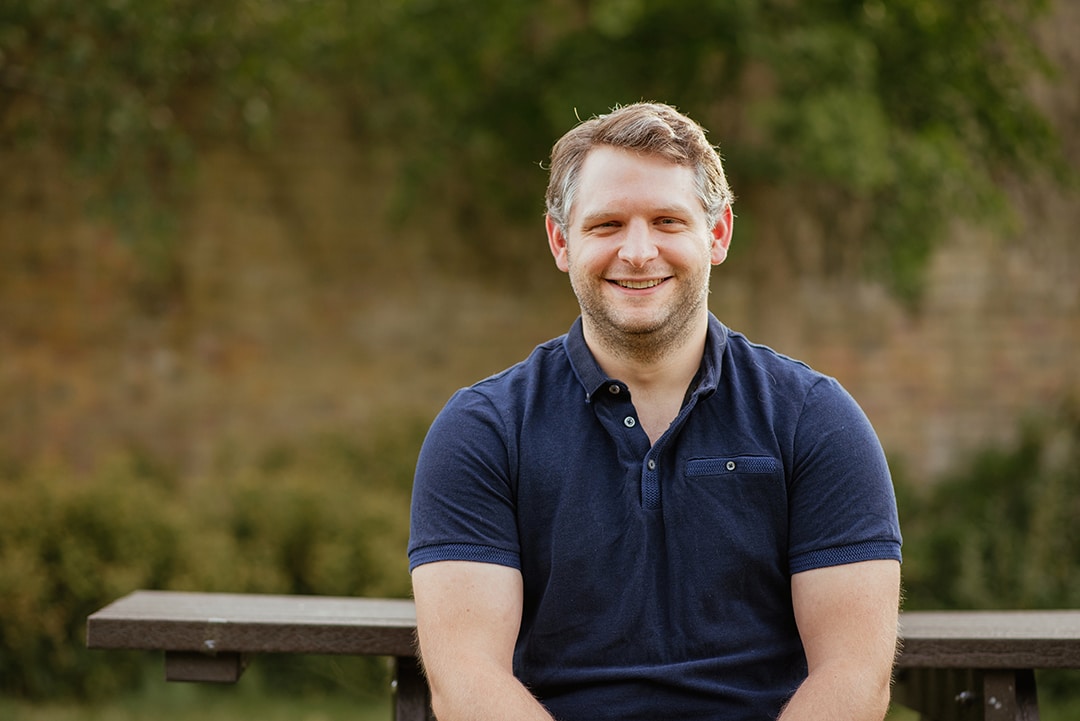
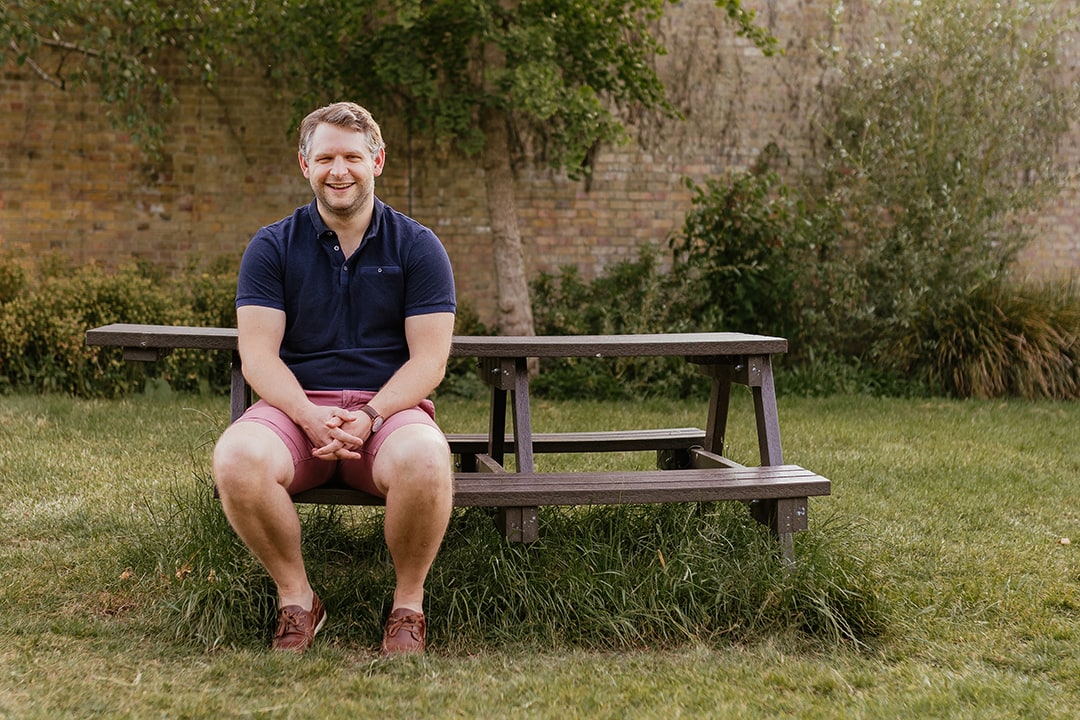
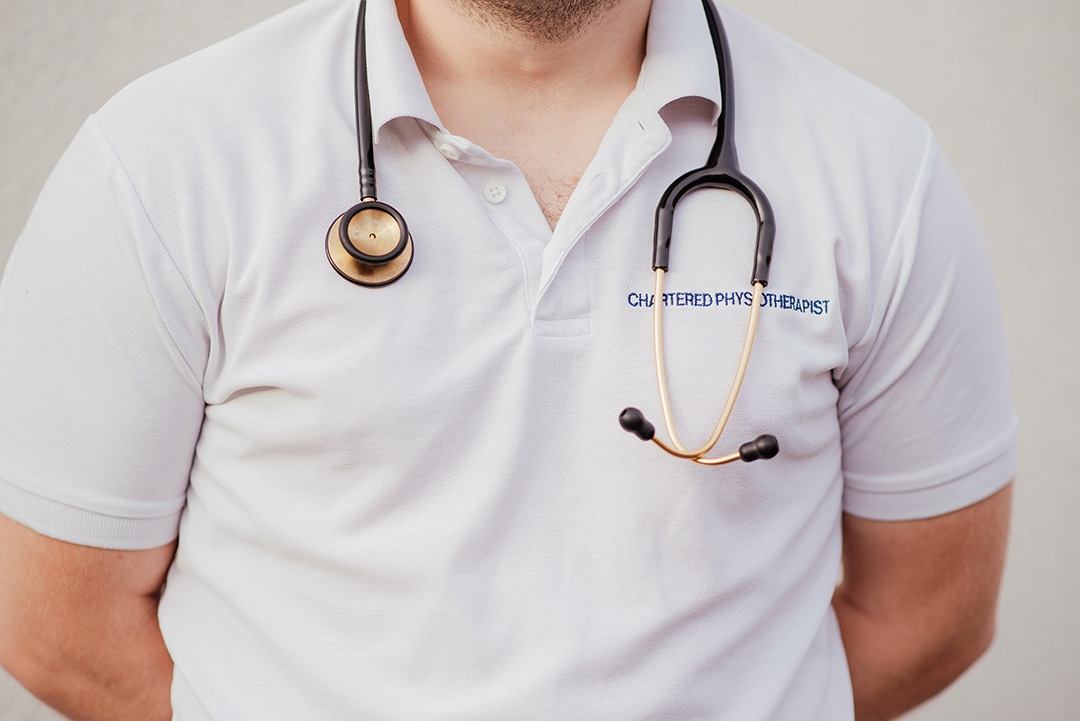
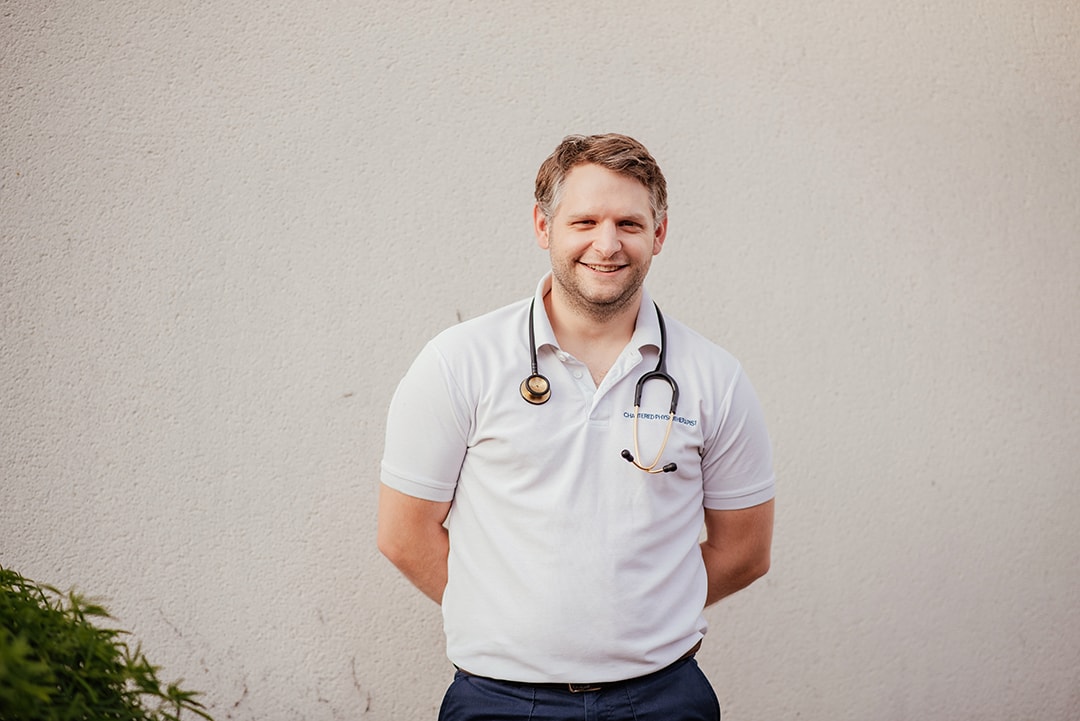
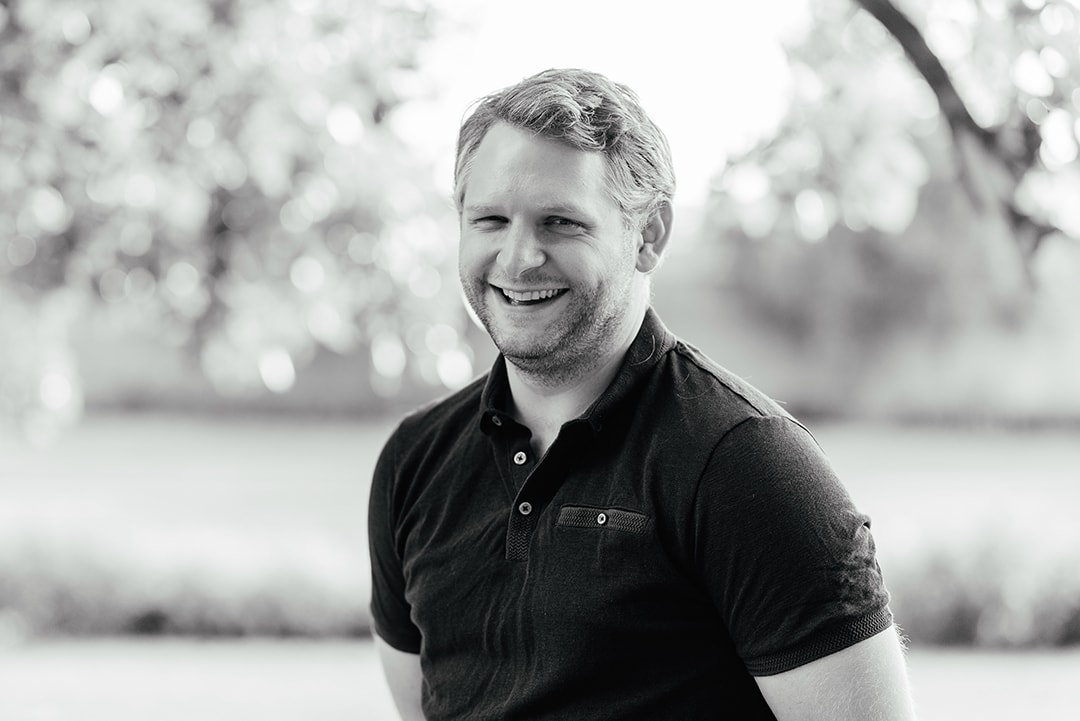
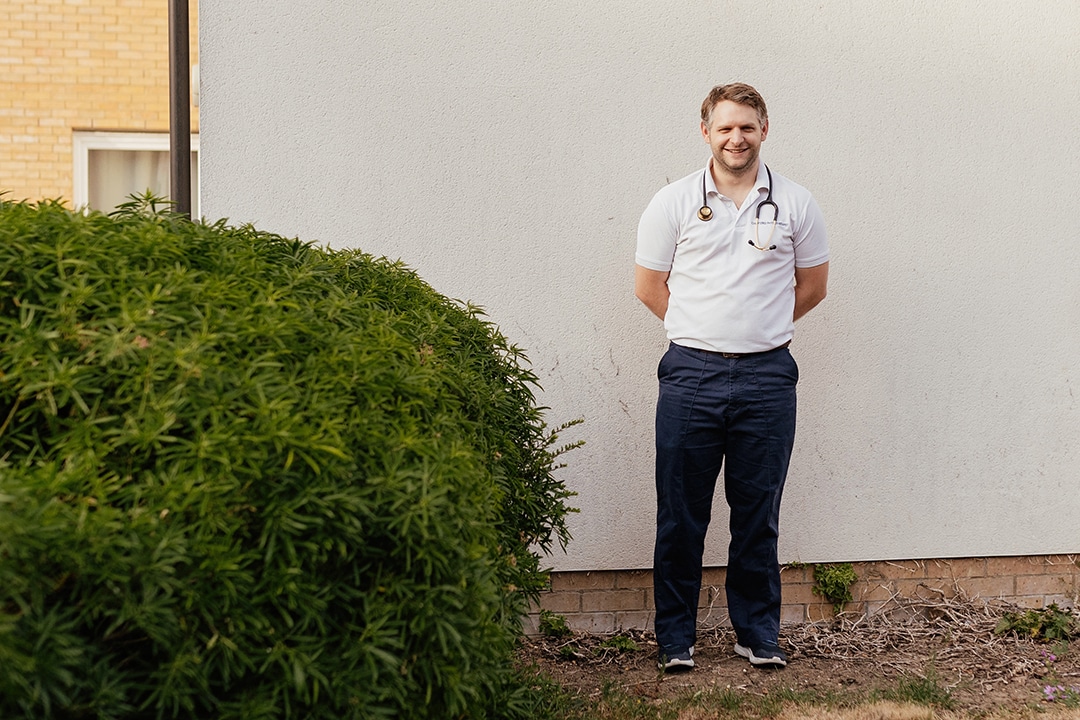
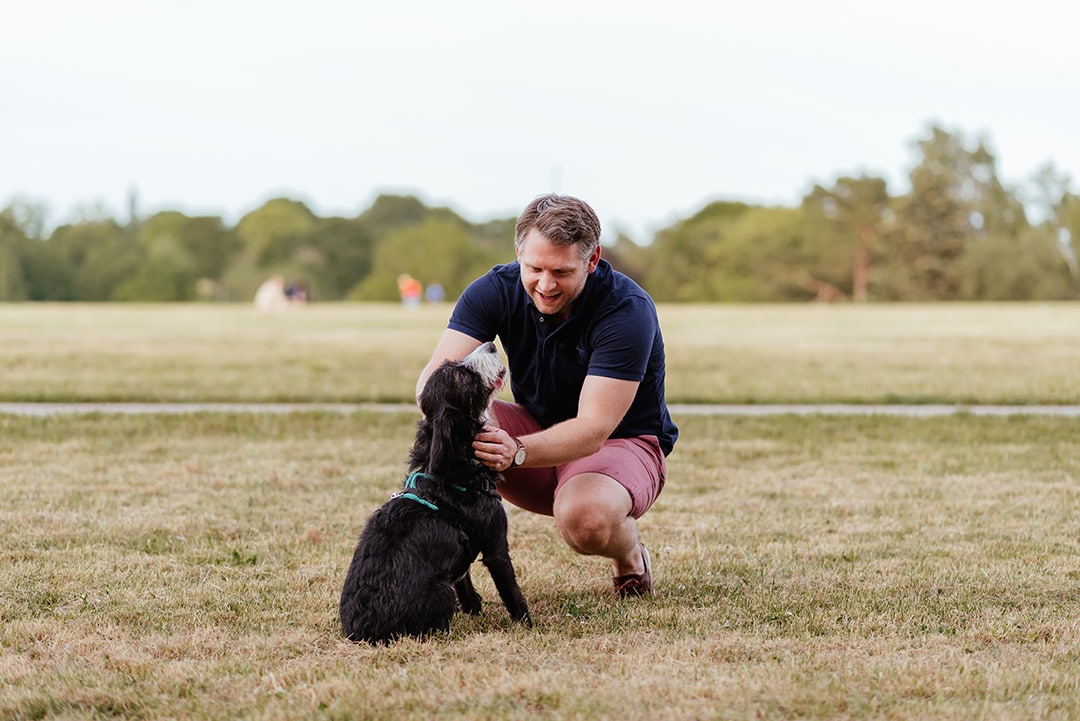

Ben – ITU Physiotherapist
“I’m a critical care physiotherapist. I work in intensive care across two hospitals in London. There’s two main roles at my job. One is what’s called respiratory physio. I help people get rid of secretions or phlegm on their chest that they can’t get rid of themselves.
Often that’s for patients that are on ventilators, in comas or that are intubated. We have different techniques so we can take control of their breathing, to try and get rid of their secretions. If those secretions aren’t gotten rid of, then it affects the way that the body takes in oxygen and the way that kind of the organs are perfused.
It’s a really important role, and one that isn’t really known. So when people say, oh, you’re a physio, can you give me a back massage? Can you show me the exercises to do, cause I’ve hurt my ankle or knee or whatever, which is obviously a huge part of the role, but it’s not the area that I specialise in.
Respiratory physio is for when the patients are really acutely unwell. The other half of that is rehab. If someone is in a coma or on a ventilator for a really long period of time, their muscles become very weak. They find things that before their illness, were normal, like walking, going up and down stairs, even getting out of bed, things they’d be able to do with no issue, they can’t do for themselves at all.
We start off really slowly and we help them effectively learn to walk again. And build up their muscle strength in order to allow them to do that.
It’s been really important and actually I think even people within the hospital are learning that physios can be really, really helpful. We actually become a key member of the team.
We call it a multidisciplinary team. All the different professions working together. It was even more important because the nurses were under so much pressure. As physios in critical care, we know about ventilators, we know how to work them, we know what we can change, and we know how best to ventilate someone. That really helped the nursing staff, because they were completely overwhelmed. And so we took on even more of a role.
With COVID being a respiratory illness, we played a massive part.
The biggest struggle was the amount of patients we had in such a short space of time. Our critical care capacity increased threefold, but we didn’t have any more staff. We had to train physiotherapists that hadn’t worked in intensive care before. As intensive care physios, we had to train them up to come and help us.
One of the other most difficult things was just how unwell people were and unfortunately there were lots of people passing away. There were just lots of people, really really unwell. And whereas normally you would maybe have one or two really sick patients, it was the majority of them that were really sick. Dealing with that from a wellbeing perspective was difficult.
I’m really lucky because I can come home and I can talk about things with my Becky and she understands.”
Becky: “Our jobs are completely different in terms of physio, we couldn’t have been more opposite. I work in the community now. I drive around when people are discharged from hospital and we get them their equipment and make sure they’re okay.”
“I’ve got colleagues that would go home and their partners work in the city or something. And they literally have no idea what they’re talking about and can’t really understand the pressure that you’re under.
Weirdly it hasn’t really affected us that much. We still have to get up and go to work, so from that regard, it hasn’t affected us as much. Not being able to go and see family and friends is difficult though. We’re both quite close to our families and they live relatively close.
Before COVID we would see both our sets of parents at least twice a month. Going from seeing them quite a lot to then not really seeing them at all, that had a big impact. Things like zoom and stuff are great, but it’s not the same. Just being able to go out and about when you want to go out and about, and not being able to play sports. That’s something that we both do in our spare time.
At the height, I didn’t really feel like I wanted to do anything when I got home, I literally just worked, slept, worked.
I was knackered and I’m not normally one to get run down or tired. One day my mum was like, you just sound exhausted. I’m not one to get emotionally brought down, I’m normally quite upbeat. But I remember a couple of points, where I was just like, this is actually really tough. For me to feel like that, it must’ve been pretty bad.”
Becky: “He’s the one always singing in the corridor.”
“I remember I walked into the office, and there were two of my colleagues already in there. They were like, we knew you were coming because you were whistling. Normally I’m singing, whistling, trying to, you know, have a bit of a laugh and a joke.
But there were times where even, I was just like, this is just mental. I remember one time there was one patient I treated a lot. I treated him for a couple of weeks and he had a tracheotomy. I left the unit thinking that he was going to die and I wouldn’t see him again.
I hadn’t actually spoken to him because he was in a coma. But because I treated him for two weeks, I put a lot of work into keeping him alive. That was a really, really tough moment. About six weeks after that point, he walked out of the hospital.
At the hospitals, we have a big tree that they call ‘the tree of life’ in the atriums. Every patient that survives COVID sticks a bumblebee onto the tree. He got to walk and put his bee on the tree before he left.
The atrium was full of people. He was one of our longest stayers and one of the first people they ventilated. It took him at least two months to get out of the hospital. But to know that he survived, because at one point, I really thought he was gonna die.
The most difficult thing was when the patients were young. Normally we’re used to treating patients that are in their sixties and over, and even then it’s really difficult when people die, but it’s part of the role. Weirdly we almost become normalized to death, in a weird sense, because we see it quite often. You don’t get used to it, but you do, because it happens.
I remember that specifically, there was a 26 year old lady that was brought in. One of my colleagues walked on and she wasn’t in a great head space, just because of the stress of the whole situation. She started crying and I was like, oh my God, don’t do that. And then the nurse looking after her, that I’d made really good friends with, she started crying. And I was like, oh my God, I can’t deal with this.
When the patients were young and they’re similar age to me or even the majority of patients were between the ages of 40 and 70. My parents are both mid sixties and actually, this could be my dad. You know, it’s not an 80 year old man. It’s actually the age of my dad, that was difficult to deal with.
When colleagues start to break down and cry and you think, yeah okay, this is tough.
Now, at work things are much better. We don’t have anywhere near as many patients. There aren’t many patients at all being admitted with COVID. And that means that we can then spend more time with our patients that are still dealing with COVID. We still have ventilator patients that have been there for between 40 and 60 days, they’re really weak. And actually physio is the main thing that they need. They’re still on ventilators, but they’re starting to wake up, so we can start trying to get them moving.
The good thing is that we can spend more time with them, we can go and see them a couple of times a day to do their rehab. All in all, it’s a much more positive outlook because the people that were really sick, if they didn’t die, they’re now getting better. Now there’s more positive stories, as opposed to negative.”
Becky: “It’ll never be the same again.”
“Our trust has developed a piece of work called ‘never go back’ or ‘never be the same’ or something along those lines. It means that everything that was pre-COVID is, well that’s what it is now, pre-COVID. Things aren’t going to go back to that, in the way that we work.
As a physio service, we weren’t seven days a week, we were five days a week. There’d be one or two people working overtime at the weekend. Whereas now we’re going to a seven day service to get physiotherapy across the seven days. That’s a huge change. It means a change of lifestyle for us. One in every four weekends I’ll be working, which has an impact.
The hospital is now completely split up. Those going in for elective surgery, those that have booked in for surgery, will go into a part of the hospital. It’s split into green and yellow, which if you’re working in a yellow, you’re not allowed to go into the green. Because they are patients that don’t have COVID, the staff don’t have COVID. The patients in the yellow zone might have COVID, or the staff might have COVID and mixing with patients that might have COVID. You’re not allowed to cross into that zone. Logistically it’s changing massively. The people in the green zone aren’t allowed to use the canteen, and aren’t allowed to go to Costa. We’ve had free Costa for the last two months!
The way people work will also change. In critical care, it’s no longer gonna be nurses on their own, physios, doctors, speech and language therapists, where they kind of work separately. Now everyone is a hundred percent working together.
In the height of it, the teamwork was unbelievable. I think that will continue. It will make us a more effective team and therefore, the patient care will be even better.
When it first started we changed shift patterns and I’d do overnight on calls as well. It was the unknown. I was going to work and when it first started, we cleared out intensive care because we knew that was going to be a wave of people that needed intensive care and ventilators.
But for about five days, nothing really happened. I kept coming home and we’d kind of wondering like, well actually, is it going to be as bad?
On the Friday before it all kicked off. There were a couple of patients that came in, and I wasn’t working the weekend. I came back in on Monday and it was just, okay. Yeah, this is getting bad now.
And then, within a week, the intensive care unit was full of patients with ventilators. Within a week, it switched from empty to completely full and everyone’s really sick.
One of the consultants that was working. He’s worked at the hospital for maybe 15 years, and obviously he’s been a doctor for probably 30 years. He said, this is the worst thing that he’s ever seen. Like the worst health crisis he’s ever seen.
Where we worked, there was a long line of beds and there were beds in spaces that weren’t meant for beds. They just put beds wherever a bed would fit. He took a picture because he’d never seen it anywhere near as busy as it was. That just proved to me how bad it really was. You know, an intensive care consultant who’d been working for 15 years in intensive care and had never seen it as bad as it was.
We were always PPE’d it up, so I don’t think I was ever really scary for me. It was hot and it took some getting used to.
There’s this technique called proning, which is where you flip a ventilator patient from lying on their back to lying on their fronts. It takes about six people to do it. It’s really hard work. We were doing that, literally walking around with a consultant, cause the physios tend to lead on the program. So I was walking around with a consultant and he would say, they need to be flipped, they need to be flipped, they need to be flipped. We’d literally just go around and just flip patients.
You’d come off after doing probably three hours of proning or turning people from proning to lying on their back again. And you come off of three hours of doing that and oh my God. Before COVID you wouldn’t prone someone for longer than 18 hours, because there’s risk of damage to areas where there’s lots of pressure. But because they were so unwell, that’s basically the only position that they would survive in. So we were proning people for 36, and some 48 hours, which was unheard of. If we’d put them onto their back, they probably would’ve died. We had to keep them on their fronts.
After a week of proning, and supining people, you get pretty knackered. To be honest, I’m quite pleased that it was when it was, because it wasn’t hot. When it first started in April, it wasn’t really hot, it was actually okay.
The last few weeks we still have to wear full PPE. Where we are rehabbing people, we’re still working hard because if you’re sitting someone up on the edge of the bed, who hasn’t moved for two months, you’re basically doing it for them. We’re doing that, but when it’s 27 degrees, in full PPE it’s very hot. It’s hot work, but I mean, obviously you have to wear it.
When they move off critical care and onto the wards, before they go home, you can wear less. You don’t have to wear the full kit, you just have to wear a mask and then apron and gloves. So that’s much better.
The patients find it difficult when we wear masks. They can’t understand you and they can’t lip read. It must be really weird to wake up from a sleep of like two months, after having all these drugs pumped into you, having withdrawal symptoms from the opioids, and you wake up and all you can see is someone’s eyes through a visor. It must be so scary.
We always wear a name badge. Initially it was just writing your name on your gown. Whereas now they’ve created stickers. Some of the speech and language therapists, they went around and took all of our photos actually, but I never got my picture.
It must be difficult for the patients and now that’s going to become the norm. We’re going to have to wear surgical masks, at least throughout the hospital. It’s going to be quite uncomfortable really, because we’re used to wearing masks for two or three hours, but then being able to take it off. And when you go for lunch or whatever, you don’t have to wear it. Or if you’re sitting in the office, you don’t have to wear it. Whereas now it’s going to be literally all the time, unless you’re eating.
I’ve got to work with some really amazing people. Nursing staff that have gone away from working in intensive care and then come back into it because they’re needed. Sometimes the nursing staff were looking after four ventilated patients. Normally they would have one, normally it’d be one to one. Whereas in the height of it, it was one to four and they would be looking after four ventilator patients, with some help from nursing staff that weren’t trained in critical care. They could help with rolling and stuff, but not really much else. The way they dealt with that was amazing.
When you walked onto the unit, even though you were wearing PPE, they’d recognise you. They’d be like, ah, glad you’re here, can you come and help with this. Working as part of that team was really nice.
Although it was a really, really difficult time, there were still occasions where we had a bit of a laugh and joke, a bit of banter, which I think was needed.
It was positive seeing the patients that have survived. There are so many patients that were basically on the brink of dying, but have actually pulled through and come out the other side.
We have a work WhatsApp group. Every time one of those patients leaves, there’s always a physio accompanying them, and they’ll video them leaving. Those patients will get a round of applause from the staff working on the ward. That’s really nice.
There’ve been a few occasions where I’ve been able to clap patients off critical care because they’ve survived the acute phase and they’re going to the ward. They’re talking and starting to walk and all that kind of stuff.
Those are the moments that are really positive and you think, you know, there have been some people that have survived and are gonna continue to live. Yeah.”

0 Comments